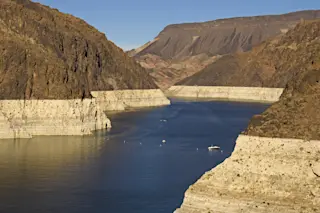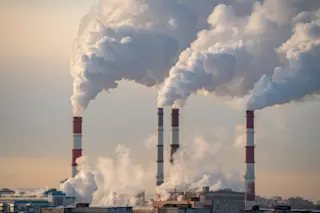The "stabilization wedge" idea is a modular way of reducing carbon emissions.
The world is now home to 7 billion people, each of whom contributes to the carbon emissions that are slowly cooking the globe. To find out how growing population affects our plans to deal with climate change, we talked with Princeton's Robert Socolow, co-creator of one of the best models for thinking about how to prevent climate change. Many of my students are "green" consumers. They are proud of riding bicycles, they turn off lights when they leave the room, and they eat little or no meat. But they are usually surprised when I tell them that the most important decision they will make, as far as its impact on natural resources is concerned, is how many children to have. Most sources of carbon emissions---heating and lighting homes and stores, making steel, providing food---grow in proportion to population. ...













